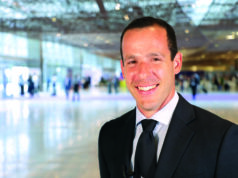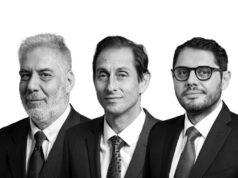At the most recent Paris Vascular Insights (PVI) meeting (8–10 November 2023, Paris, France), Renal Interventions spoke to Gianmarco Falcone (Azienda Ospedaliero Universitaria Careggi, Florence, Italy) about endovascular arteriovenous fistulas (endoAVF) and what he feels is needed to ensure that this relatively “new concept” of vascular access creation is used to its full potential.
One of the first things that Falcone highlighted was that it is essential to have a strong multidisciplinary team (MDT) at the core of any endoAVF programme, and to ensure that all members of this team are fully trained so that the MDT can succeed with the use of endoAVF technology. He stated that “to succeed in this kind of technology, we have to have a working multidisciplinary team [and a] very dedicated programme”. To achieve this, he suggested that centres should set up a “kind of dialysis training programme” that employs a “hub and spoke technique” to ensure that large centres are equipped to undertake endoAVF procedures. He also added that it is essential to outline the roles of individual team members—such as dialysis nurses—in the protocol, so that all key roles have responsibilities that are clearly outlined.
Expanding further on what he felt was essential to a good endoAVF programme, Falcone added that two key aspects of a functioning team is “an MDT working together”, but also that “part of the MDT should be the nephrologist that is the team leader, [along with] the interventional radiologist, vascular surgeon, maybe anaesthesiologist” but crucially, “the dialysis nurse”. “At our centre it is the dialysis nurse,” he outlined, “who is in charge of the daily use of the fistula and who has the responsibility of conducting the first-line scanning of the patient, which then allows them to highlight to the MDT any kind of problem—whether the fistula is open or not, whether they see thrombosis or maybe a suspicious stenosis—so that they can assess and approach any issues in the best way possible for that patient.”
Another point that he highlighted is the role that patient selection plays in a successful endoAVF programme. “[For patient selection] currently the need is to have the most individualised approach possible that may vary from patient to patient. The standard ‘distal-first’ approach cannot be pursued in all patients. Whenever it is deemed appropriate, the algorithm we are following is the same. So, if we can use a distal radiocephalic [fistula], we go for a distal radiocephalic. If the patient is not judged eligible for distal fistula creation or in case of a previous failure of the distal fistula,” Falcone stated, “maybe then we can consider using endoAVF.” EndoAVF, he avers, is kind of a mix, because it’s not a proper distal, but it’s also not a proximal fistula. “They’re something created in the deep-venous system and they are mainly slow-flow fistulas, so they can also protect the patient for cardiac impairment. So yes, the patient selection plays a key role in an endoAVF programme, but basically we are quite used to the patient selection for every procedure”.
Responding to a question about “stumbling blocks” when placing endoAVF and whether secondary interventions fell into this category, he stated that “from the patient perspective, secondary interventions could be understandably seen as a very adverse aspect; but we have to explain to the patient that these kinds of fistulas, as with the others, will possibly have to have some small adjustment before working effectively”.
When asked about the data, Falcone stated that “we can see that surgical AVF have two to three reinterventions per patient per year, and the data we have so far for endoAVF showed us that we are talking about less than one per patient per year. So, I’m not really worried about secondary interventions”.
As the interview concluded, Falcone summarised his feelings on the need for a dedicated programme for endoAVF. He stated: “I think that a tailored, dedicated programme is mandatory to succeed in this new technology for patient benefits,” adding that “we really need a co-working mindset for the MDT, and—as it’s a new technology—we really need some homogeneous data in literature to validate the technique”.












